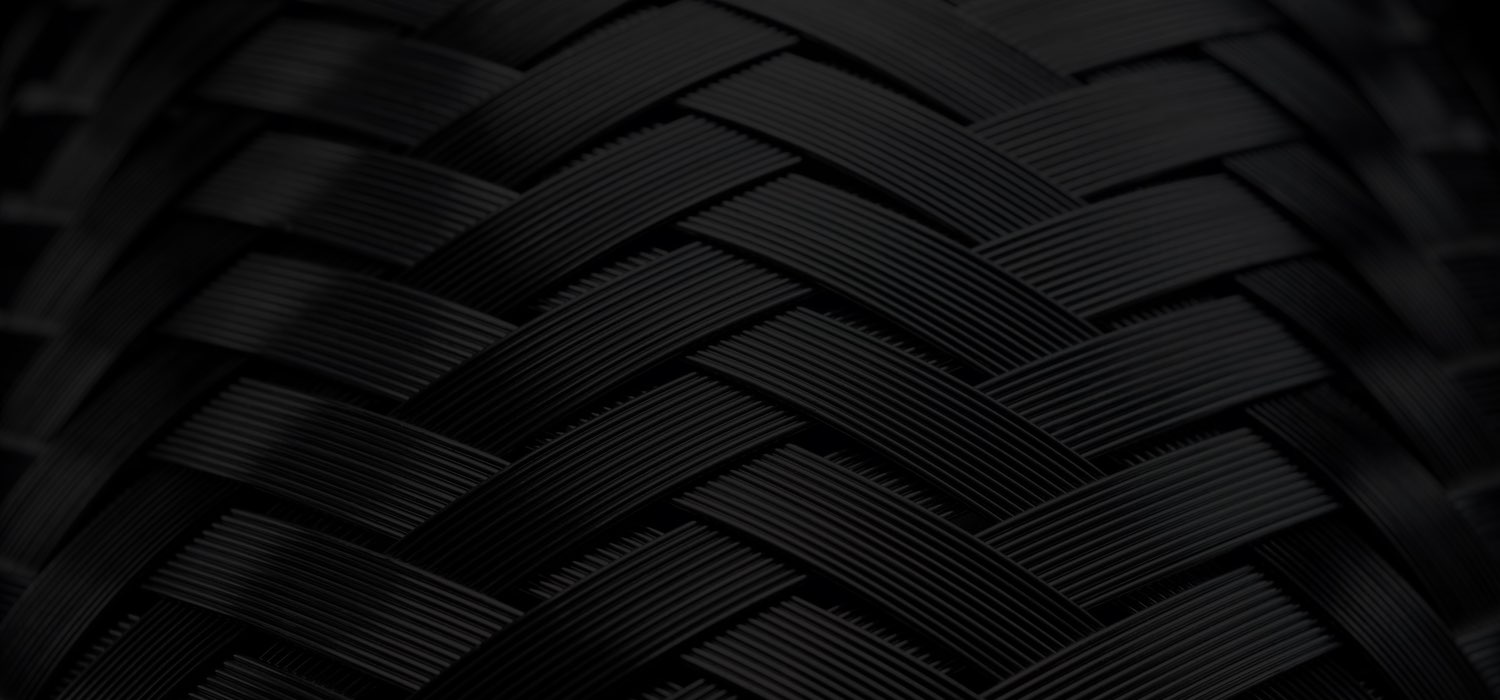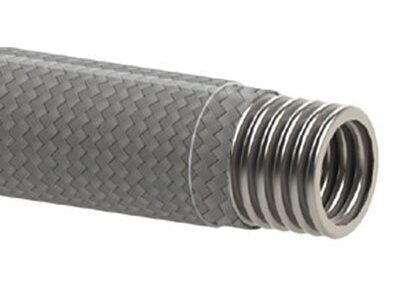
Blog: Industry
How Do Cryogenic Hoses for Liquid Nitrogen Differ from Standard Options?
20th June 2025

When handling liquid nitrogen at temperatures as low as -196°C, standard hoses simply won't suffice. At Flexmetallic Industries, we understand that liquid nitrogen applications demand specialised equipment designed to withstand extreme conditions whilst maintaining operational integrity. Our British-manufactured cryogenic hoses are engineered specifically for these challenging environments, but what exactly sets them apart from standard options?
Key Differences Between Liquid Nitrogen Hoses and Standard Options
Material Composition — Specialised Metals vs. Standard Materials
The most fundamental difference between liquid nitrogen hoses and standard options lies in their material composition. Standard industrial hoses typically use materials that become dangerously brittle at cryogenic temperatures.
For liquid nitrogen applications, our hoses feature:
- 316L stainless steel construction - This specific grade maintains ductility and structural integrity at -196°C, with remarkable mechanical properties including yield strength of 75 MPa (517 MPa) and tensile strength of 185 ksi (1276 MPa) at this temperature
- Specialised corrugation profiles - Engineered to accommodate thermal contraction without compromising flexibility
- Enhanced material thickness - Providing additional structural support against the stresses of extreme cold
- Uniform material consistency - Eliminating weak points that could develop stress fractures during thermal cycling
Unlike standard hoses that may use composite materials or lower-grade metals, liquid nitrogen hoses must utilise materials that have been specifically tested and certified for cryogenic service in accordance with BS EN ISO 21012:2024.
Thermal Management Features
Liquid nitrogen presents unique thermal challenges that standard hoses simply cannot address. The extreme cold can create significant safety and operational issues without proper management.
Insulation Systems
Depending on the application requirements, liquid nitrogen hoses may incorporate various insulation approaches:
- Non-insulated designs - For short transfers where some frost formation is acceptable
- Foam insulation - Providing basic thermal protection for moderate-length transfers
- Vacuum jacketed construction - Double-walled design with evacuated space between walls, offering superior thermal efficiency for critical applications using our jacketed metallic hose assemblies
Standard hoses lack these specialised insulation options, making them unsuitable for maintaining the thermal integrity of liquid nitrogen during transfer.
Thermal Expansion Accommodation
When exposed to -196°C liquid nitrogen, materials contract significantly. Our cryogenic hoses can incorporate:
- Expansion loops - Designed to accommodate thermal movement
- Flexible corrugation patterns - Allowing the hose to adapt to dimensional changes
- Specialised end fitting designs - Engineered to prevent leakage during thermal cycling
These features are absent in standard hoses, which would likely fail due to stress fractures when subjected to the extreme thermal cycling of liquid nitrogen applications. Understanding the minimum live length requirements is essential for proper installation.
Enhanced Safety Features
Safety is paramount when handling liquid nitrogen, and our cryogenic hoses incorporate numerous features not found in standard options.
Pressure Management
Liquid nitrogen can rapidly expand to precisely 696 times its liquid volume when it vaporises, creating potential pressure hazards. Our liquid nitrogen hoses feature:
- Higher pressure ratings - Working pressures up to 300 bar depending on design requirements
- Enhanced burst resistance - With safety factors typically 5:1 (burst pressure:working pressure)
Standard hoses lack these critical safety features, making them dangerous for liquid nitrogen service.
Connection Security
The connections represent critical points in any liquid nitrogen system. Our cryogenic hoses utilise:
- TIG welded end fittings - Dual coded to ASME IX and BS EN 9606-1 standards, using our proven welding process
- Nitrogen end fittings - Full range of specific NIT fittings available
- Specialised flange designs - Maintaining seal integrity at cryogenic temperatures, with options documented in our flange chart
- Material-matched components - Ensuring uniform thermal contraction throughout the assembly
These connection systems are specifically engineered for cryogenic service, unlike the standard connections found on conventional hoses.
Testing and Certification Requirements
Perhaps the most significant difference between liquid nitrogen hoses and standard options lies in the rigorous testing and certification requirements.
Our cryogenic hoses can undergo:
- Cryogenic cycling tests - Verifying performance through repeated cooling and warming cycles
- Helium leak detection - Identifying microscopic leaks that could compromise safety, with sensitivity down to 1×10^-9 mbar·l/s
- Material certification - Full 3.1B documentation tracing materials back to their source in accordance with EN 10204:2004
- Non-destructive examination - Ensuring weld integrity and material consistency
Standard hoses undergo basic pressure testing but lack the comprehensive validation required for cryogenic service and the certifications necessary for safe operation.
Application-Specific Designs
Liquid nitrogen applications vary widely across industries, from pharmaceutical manufacturing to semiconductor production. Our cryogenic hoses can be customised with features specific to each application:
- Custom lengths and configurations - Tailored to specific installation requirements
- Application-specific end fittings - Designed to integrate with existing systems
- Variable flexibility options - Balancing bend radius requirements with durability
- Industry-specific certifications - Meeting the unique requirements of medical, food, or aerospace applications
This level of customisation is rarely available with standard hose options, which typically come in limited configurations.
Comparative Performance Data
The table below provides a direct comparison between liquid nitrogen-rated hoses and standard industrial hoses:
| Performance Criteria | Liquid Nitrogen Hoses | Standard Industrial Hoses | |
| Temperature Rating | -196°C to +80°C | Typically -40°C to +120°C | |
| Material Performance | Enhanced strength at cryogenic temperatures (316L stainless steel yield strength increases to 75 ksi at -196°C)17 | Becomes brittle and unsafe below -40°C | |
| Expansion Ratio Handling | Designed for 1:696 volume expansion6 | Not rated for cryogenic expansion | |
| Insulation Options | Multiple configurations including vacuum jacketing | Limited or none | |
| Testing Standards | BS EN 13766:2018, helium leak detection to 10^-9 mbar·l/s | Basic pressure testing only | |
| Safety Factor | 4:1 (Burst:Working Pressure) | Typically 3:1 |
The Flexmetallic Advantage
At Flexmetallic Industries, our liquid nitrogen hoses benefit from our comprehensive British manufacturing capabilities in Northampton. Our team's extensive experience with cryogenics ensures that every hose assembly we produce is specifically engineered for the unique challenges of liquid nitrogen service.
When selecting hoses for liquid nitrogen applications, the differences between specialised cryogenic hoses and standard options aren't merely technical distinctions—they're critical safety and performance factors that directly impact operational reliability and personnel safety.
Frequently Asked Questions
What materials are best for liquid nitrogen hose assemblies?
For liquid nitrogen service, 316L stainless steel is the superior choice due to its exceptional mechanical properties at -196°C, including increased yield strength (517 MPa) and tensile strength (1276 MPa) with retained ductility (59% elongation).
How often should liquid nitrogen hoses be inspected?
We recommend visual inspections before each use and comprehensive testing annually, including pressure testing to ensure continued safety and performance.
Can composite hoses be used for liquid nitrogen applications?
Whilst some specialised composite hoses are rated for cryogenic service, they typically offer lower working pressures (around 10 bar) compared to our metallic hose assemblies, and may have more limited service life in demanding applications.
Conclusion
For liquid nitrogen applications where failure is not an option, contact our technical team to discuss your specific requirements or request a quote for a custom-engineered solution from the UK's leading metallic hose specialist.